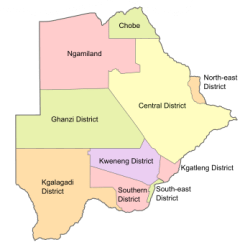Tanzania’s unique blend of history, geography, and administrative evolution demonstrates its rich cultural heritage and dynamic governance structure. The country’s division into 30 regions ensures localized administration while maintaining a cohesive national identity, balancing its mainland and Zanzibar components effectively.
Capital Cities
- Dodoma: Official capital, gradually taking over from Dar es Salaam.
- Dar es Salaam: Tanzania’s largest city and economic hub.
Current Administrative Structure
Primary Subdivisions:
Tanzania is divided into 30 regions (mkoa in Swahili), which are further subdivided into districts, divisions, wards, and villages.
Mainland Regions:
- Arusha
- Dar es Salaam
- Dodoma
- Geita
- Iringa
- Kagera
- Katavi
- Kigoma
- Kilimanjaro
- Lindi
- Manyara
- Mara
- Mbeya
- Morogoro
- Mtwara
- Mwanza
- Njombe
- Pwani
- Rukwa
- Ruvuma
- Shinyanga
- Simiyu
- Singida
- Tabora
- Tanga
Zanzibar Regions:
26. Pemba North
27. Pemba South
28. Zanzibar North
29. Zanzibar South and Central
30. Zanzibar West
Further Subdivisions
- Districts (Wilaya):
- Tanzania had 129 districts as of 2003.
- Each region is composed of several districts.
- Lower Administrative Units:
- Divisions
- Wards
- Villages (in rural districts)
Tanzania’s history as a unified country began with the merger of Tanganyika and Zanzibar in 1964. Here’s a timeline of key historical events:
- Pre-1900:
- Zanzibar, including Pemba, became a British protectorate.
- Tanganyika was part of German East Africa.
- Post-World War I:
- Tanganyika was mandated to Britain by the League of Nations.
- Post-World War II:
- The mandate transitioned to a United Nations trusteeship under British administration.
- Independence:
- Tanganyika: Gained independence on December 9, 1961.
- Zanzibar: Gained independence on December 19, 1963.
- Union Formation:
- On April 26, 1964, Tanganyika and Zanzibar merged to form the United Republic of Tanganyika and Zanzibar.
- The name was officially shortened to Tanzania on October 29, 1964.
Origin of the Name
The name “Tanzania” is a combination of:
- Tan(ganyika)
- Zan(zibar)
- -ia: A suffix commonly used for country names.
General Information
- Short Name: Tanzania
- ISO Code: TZ
- FIPS Code: TZ
- Languages: Swahili (sw), English (en)
- Time Zone: UTC+3
- Capitals:
- Dodoma: Official capital and seat of government.
- Dar es Salaam: Economic hub and former capital.
Distinction Between Mainland and Zanzibar
The distinction between Tanzania Mainland and Tanzania Zanzibar remains significant, reflecting their separate historical paths before the 1964 union.
- Mainland: Formerly Tanganyika.
- Zanzibar: Includes the islands of Unguja (Zanzibar Island) and Pemba.
Territorial Extent
Tanzania encompasses several islands and territories:
- Lake Victoria Islands:
- Kagera: Bumbiri, Ikusa, Bukerebe, Nabuyongo.
- Mara: Lukuba Island.
- Mwanza: Ukerewe, Rubondo, Ukara, Maisome, Kome, Irugwa.
- Indian Ocean Islands:
- Lindi: Songa Manara Island.
- Pwani: Mafia Island.
- Zanzibar Regions: Unguja Island, Tumbatu Island, Uzi Island, Pungume Island.
Change History of Administrative Divisions
- Colonial Era:
- Tanganyika divisions in 1922 included 22 provinces.
- Post-Independence (1961):
- Tanganyika initially had 12 provinces.
- Reorganization into Regions:
- 1966: Transition to 20 regions.
- 1982-1984:
- Coast region renamed Pwani.
- Pemba and Zanzibar regions reorganized.
- 2002-2012: New regions were formed, including:
- Geita, Katavi, Njombe, and Simiyu.
Key Names and Variants
Regions and their Variants:
- Dar es Salaam: Known as Daressalam (German).
- Pwani: Previously called Coast.
- Kagera: Formerly West Lake.
- Zanzibar: Known as Sansibar (German), Zanzíbar (Spanish).

Tanzania
Tanzania, officially known as the United Republic of Tanzania, is a country in East Africa celebrated for its breathtaking landscapes, rich cultural heritage, and incredible biodiversity. With Dodoma as its capital and Swahili and English as its official languages, Tanzania is a cornerstone of Africa’s historical and natural legacy. It boasts a population of 61,741,120 as of the 2022 census and spans a vast land area of 885,803 square kilometers. The country’s currency is the Tanzanian Shilling, and its international dialing code is +255.
Historical Background
Tanzania’s history is a tapestry woven from the threads of ancient civilizations, colonial influences, and modern triumphs. Before colonialism, the region was a melting pot of diverse cultures and thriving trade routes, particularly along the Swahili Coast. The German Empire established control in the late 19th century, later succeeded by British rule after World War I. In 1961, Tanganyika gained independence, followed by Zanzibar in 1963. The two territories united in 1964 to form Tanzania, symbolizing the country’s spirit of unity and resilience.
Geography and Climate
Tanzania’s geography is as diverse as its people. The country features expansive savannahs, lush rainforests, and iconic landmarks such as Mount Kilimanjaro, Africa’s tallest peak, and the Serengeti National Park, famous for its annual wildebeest migration. Offshore, the islands of Zanzibar and Mafia offer tropical paradises with rich marine biodiversity. Tanzania’s climate ranges from tropical along the coast to temperate in the highlands, making it a year-round destination for travelers and researchers alike.
Wildlife and Conservation
Few places on Earth rival Tanzania in terms of biodiversity. The Serengeti National Park is home to the Big Five: elephants, lions, leopards, buffalos, and rhinos. Kilimanjaro National Park attracts climbers and nature enthusiasts from around the globe. Meanwhile, the Ngorongoro Crater, a UNESCO World Heritage Site, offers a self-contained ecosystem teeming with wildlife. Marine parks in Zanzibar and Mafia provide havens for coral reefs, whale sharks, and other aquatic life. The government and NGOs actively work to preserve these natural treasures through sustainable tourism and conservation programs.
Culture and People
Tanzania’s cultural landscape is enriched by over 120 ethnic groups, each contributing to the nation’s vibrant tapestry. The Swahili language, deeply rooted in African and Arabic influences, serves as a unifying medium of communication. Traditional music, dance, and crafts are integral to Tanzanian identity, reflecting centuries of shared history and innovation. Festivals like the Zanzibar International Film Festival showcase the country’s creative spirit and global engagement.












